A blog from the Animation crew at the School of the Museum of Fine Arts in Boston, MA.
Feb 28, 2011
The Betty Boop Film
Feb 22, 2011
Referencing of animations on The Simpsons

In the most recent episode of The Simpsons, Bart made his online flash animation into a short animated feature. This short was then nominated for several awards, such as an Academy Award, and Oscar and several others. The episode not only talks about animation and some of the basics of making a short film, but makes reference to some classic and big name animations as well. The "other nominees" included, The Brothers of Beauville, which makes reference to The Triplets of Bellville, done in a similar animation style with deep colours and thin line work. Next was a black and white animation that referenced Persepolis, using the same think line work and greyscale contrast with one colour, the yellow of a flower. The Simpsons then make a reference to Pixar, with an animation company called Mixar, that made a short called Condiments, which was done in true Pixar fashion, CGI animation. Later, when Bart goes to the Oscars, the references continue with Willis and Crumble, a direct reference to Wallas and Gromit, which they kept true to by doing the clip in claymation.
The Simpsons: Angry Dad
|-Kelly-|
Feb 19, 2011
The Buzz

To begin, I absolutely love Cab Calloway. From his grandiose "Hi De Hi De Ho's" to his leg shakes and exaggerated maestro flails, he was the epitome of 1930s swing jazz. I first saw him in the Fleischer Brothers' Minnie the Moocher clip from 1932. He learned his scat style of singing and performing from Louis Armstrong (Armstrong was also a frequent source of inspiration and a collaborator for the Fleischer Brothers). Noted for his charisma (his signature dance move was called "The Buzz"), Calloway is an icon of the 1930s and it is unfortunate that despite his (and Armstrong's) well-intentioned collaborations with the Fleischer Brothers resulted in depictions that were grotesque in regards to the frequent racism that also characterized this time period. Calloway is known for his energetic and vivid stage presence that harks back to the presence of vaudeville culture. Furthermore, those familiar with Michael Jackson's Moonwalk (performed previously in street culture before Jackson's 1983 performance) should know the grandfather to this infamously popular dance style is "The Buzz". This illustrates just how much of an influence Calloway had on entertainment and American culture in the 30's and the foothold he has inadvertently maintained within contemporary society.
Born in 1907, and raised in Baltimore, Maryland, Calloway died in 1994, at the age of 88.
Resources:
NPR
African American Music Collection: University of Michigan
|| Post by: Stephanie Clark ||
Feb 17, 2011
Superman

In watching the lecture slide show today, I read that Superman was created by two teenagers. Being one myself, I found it inspiring that something so iconic was created by someone when they mere around my age. 1933 is the date of the earliest (remaining) sketch of Superman, drawn by Jerry Siegel who created the superhero with his friend Joe Shuster when they were 17. They told the public that the origins of Superman arose as an image of what they wished to be seeing that they were unpopular average teens. However, after both creators died, a new theory as to the actual spark that ignited the dream of this cultural icon surfaced. In the very first comic strip of Superman, the hero rushes to the aid of a shopkeeper who was tied up and held at gunpoint. This is supposedly how Jerry Seigel's father died. He owned a clothing store which was held up one day. It is unclear whether he was shot or suffered from a heart attack, but Jerry's family believed that he was shot twice in the chest. So the theory as to the origins of Superman is that he was created as someone who could have rescued Jerry's father. Though this is not a proven fact, and neither of the creators are alive to state otherwise, there is strong evidence that supports the idea, and many comic experts believe it to be true.
Post by Luke
info from
http://www.dailymail.co.uk/news/worldnews/article-1049411/Superman-creator-dreamed-comic-hero-father-died-armed-raid-boy.html
image from http://comicr.wordpress.com/
The Old Mill
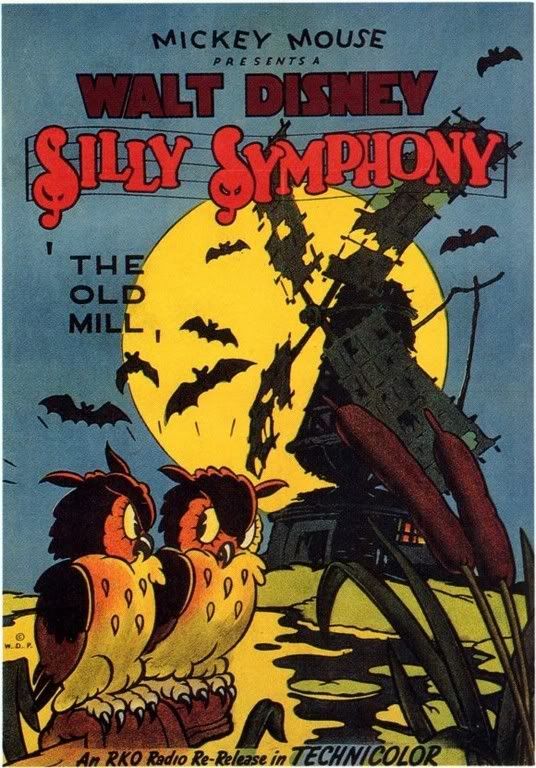
Disney's 'The Old Mill' is an single-handed testament to Walt Disney's dedication to visually striking, well rendered, well written and mentally fascinating cartoons. As a child who watched Disney films, I was always seized by the visual experience, while not quite being able to appreciate quite why or how. As an art student looking back on my favorite Disney classics, and appreciating some newly discovered ones as well, I find myself trying to quantify my experiences with Disney animations.
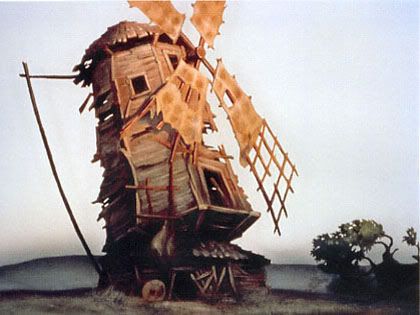
The 'Old Mill' Silly Symphony is a great animation which exemplifies best what is so fascinating and moving about Disney animations: it is a complete visual, auditory and emotional experience. Disney's dedication to beautiful, realism inspired animation makes the visual aspects of his work nigh on breathtaking, while the emotive and dramatic quality of the music act to enhance or highlight the visuals. The plot for the animations is well written and well timed to maximize your emotional attachment to characters, anxiety through the rising action and climax, then settle back with relief through the falling action and conclusion. Disney not only coordinated the best animators, writers and musicians for his animations, he selected a style and animation type to perfect. The 'Old Mill', made in 1937, remains relevant today through Disney's vision and commitment to really, really well executed animation.
*~Katrina~ *
Feb 16, 2011
Multiplane
 Its exciting to imagine the moment of realization, the creative wellspring that never would have been without it, the teams that were lucky enough to use the equipment, and the individuals that had tremendous drive and creative talent that never touched it. Technology and humanity are always trying to become the same thing...
Its exciting to imagine the moment of realization, the creative wellspring that never would have been without it, the teams that were lucky enough to use the equipment, and the individuals that had tremendous drive and creative talent that never touched it. Technology and humanity are always trying to become the same thing... ...in doing so technology gets smaller and more personal. Entire animation studios are compact into software inside personal computers that sit on work desks. Its easier for an independent or small team of artists to get a hold of software and express themselves through animation now then it ever was. Adobe After Effects is one program that has the ability to replicate the the multiplane camera and a spectrum of other effects.
...in doing so technology gets smaller and more personal. Entire animation studios are compact into software inside personal computers that sit on work desks. Its easier for an independent or small team of artists to get a hold of software and express themselves through animation now then it ever was. Adobe After Effects is one program that has the ability to replicate the the multiplane camera and a spectrum of other effects. 
tim ( v @ _ @ v )
How Sound Revolutionized Animation

Unfortunately there are only few examples of Fischinger's work to be found online. However, on this obscure Chinese sight you'll find Fischinger's "Motion Painting No. 1": http://www.tudou.com/programs/view/PvmbCzO1q48/. All of the animation you see was done on plexiglass. This was his last major work. Notice how the sound and image come together in surprising ways.
-- post by Erik
Music, Disney and appropriation.
Steamboat Willie, and the Introduction of Mickey Mouse

Scene from 'Steamboat Willy'. Image from http://www.cartoonreviewsite.com
‘Steamboat Willie’, a comical film about a little mouse named Mickey, who works on a steamboat, under the command of the big and disgruntled Captain Pete. Feeling overworked Mickey decides to take a couple of breaks, and sings, dances, and plays music (occasionally at the expense of a couple of animal’s discomfort) and tries his best to have fun. The cartoon was first released in 1928, by Walt Disney, and was not only the first film to show Mickey and Minnie Mouse, but it was also the first ever cartoon to have sound! Of course, despite being one of the more famous of Walt Disney’s early creations, ‘Steamboat Willie’ was not the first motion picture Walt Disney had created. In fact, Walt Disney had made several cartoons before ‘Steamboat Willie’, the most recent of these cartoons was called ‘Oswald the lucky Rabbit’.
Oswald became the precursor to Mickey Mouse, in both character, and style. In his first appearance, Oswald is a trolley driver, who throughout the whole cartoon tries his best to maintain control of his trolley, and transport his passengers safely to their destination. The cartoon, however was not as successful as Disney had hoped. To make matters worse, after working under Charles Mintz in New York, Mintz took all rights to Oswald the Rabbit, as well as the Oswald series, making Oswald now legally belonging to him. Robbed of the rights to Oswald, Walt Disney decided to create a new character, one that was much like Oswald, but not a rabbit. And so Disney decided to change his character from a rabbit, to a mouse.
This mouse would soon become Mickey Mouse, the loveable mouse in red pants we all know and love. Disney then decided to go to Hollywood, to work on a cartoon series using his new character. There he, his brother Roy, and his lead animator Ub Iwerks began drawing out plans for their newest cartoon ‘Plane Crazy’. Their workstation was a garage belonging to Walt and Roy’s uncle. Walt’s wife Lillian, and Roy’s wife Edna, were drafted to provide the ink, and paint for the cartoons that were to be created here in the garage. After the completion of ‘Plane Crazy’, Walt still felt that there had to be some sort of improvement, after ‘Plane Crazy’ failed a screen test. While halfway finished with his next cartoon ‘Steamboat Willie’ (which was inspired by ‘Steamboat Bill, Jr’ by Buster Keaton) Disney decided that his cartoons needed to have sound. And so he hired animation music composer Carl Stalling to create a soundtrack for the cartoon, and after they used the new Cinephone Process, developed by Pat Powers, to synchronize the soundtrack, Steamboat Willie was complete. In 1928, ‘Steamboat Willie’ was presented in the Colony Theatre, and became the bedrock of Walt Disney’s success.
-Jon
sources were:
http://www.cartoonreviewsite.com
and Wikipedia.com
Tangled
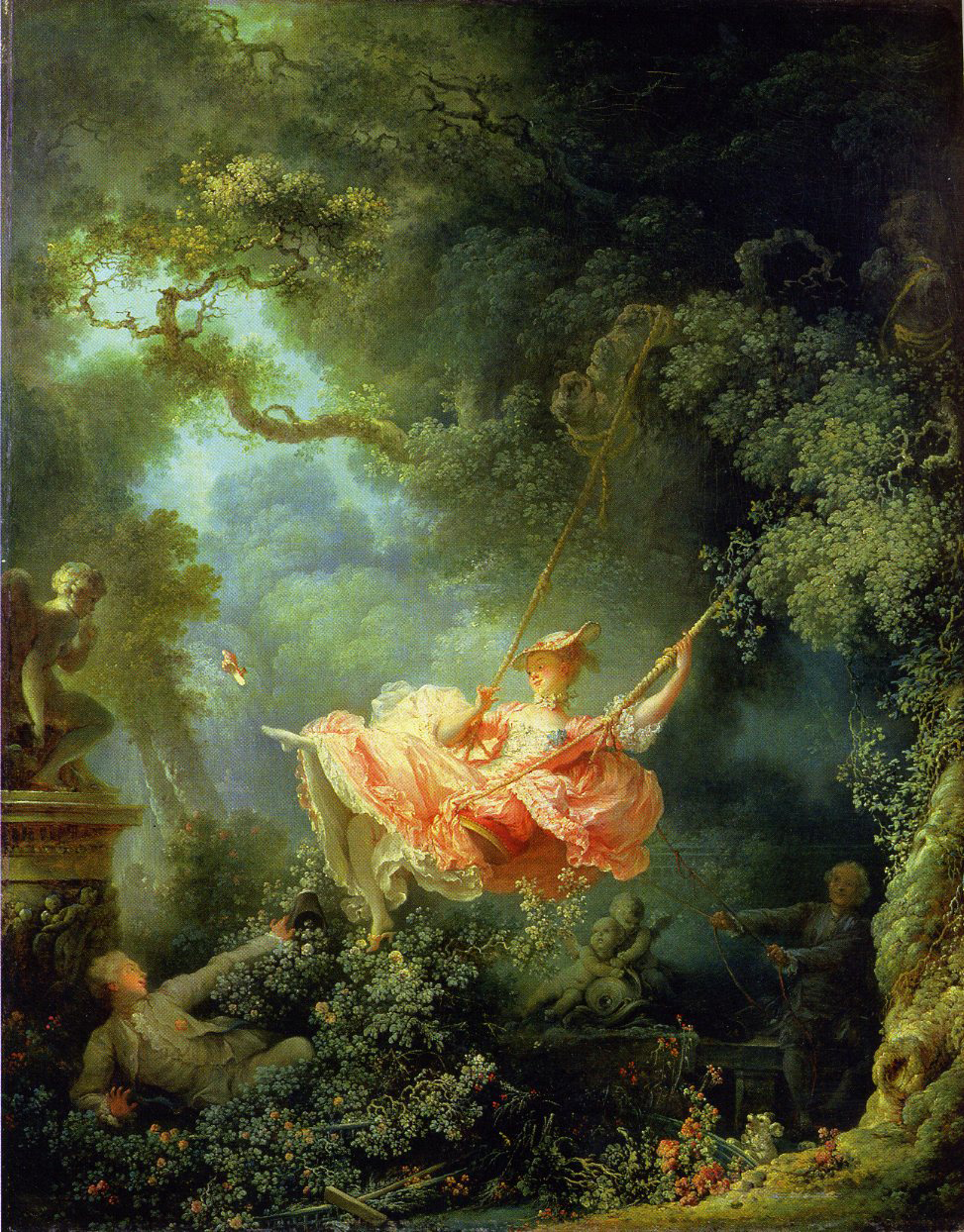
Walt Disney Studios has a long list of achievements in the animation industry. They created the first animation in technicolor (Snow White and the Seven Dwarfs), in cinemascope (Lady and the Tramp), and large format animation (Sleeping Beauty). Disney Studios also made great strides when it came to digital processing and computer generated imagery.
Most recently, Disney has made developments in hand drawn computer generated imagery in the film Tangled which was released last year. Tangled is credited as the second most expensive film ever made, and most expensive animated film. In creating animations and films, animators for Disney had to adapt and develop new technologies in order to achieve the look sought after by the producer. Glen Keane, one of the producers of Tangled, wanted to create a style reminiscent of Disney's hand drawn animations while also in a contemporary 3-D style. A lot of the technologies used to create this look did not exist when Disney Studios first started to produce this film. The film was modeled after the oil painting titled "The Swing" by Jean-Honore Fragonard because of its lush and romantic style. To capture this and create realistic and believable hair, Disney animators had to develop their own technologies, including using a hair simulation program called Dynamic Wires and using discrete differential geometry.
Feb 15, 2011
Mary Blair

Mary Blair was a illustrator whose art was very influential in many Disney animated films. Her use of color and unique aesthetic brought a modern look to Disney animation. Mary's whimsical style had a authentic child-like quality in which Walt Disney loved.
Mary started her career as an artist exhibiting watercolors. She then went on to work at Ub Iwerks studio before being hired at Disney in 1940. She was creatively involved in many Disney projects major ones including: Peter Pan, Alice in Wonderland, Song of the South and Cinderella. Sadly Mary died in 1978 at the young age of thirty-three, however her spirit lives on in the highly influential work she created.
Examples of her influence can be seen below:
(left image Mary Blair right image Disney)
Peter Pan:


Cinderella:


sources:
http://magicofmaryblair.com/home
http://legends.disney.go.com/legends/detail?key=Mary+Blair
-Callie

Silly Symphonies

Starting in 1929, the Walt Disney Production Company began to experiment with the idea that an animation could be made based on musical scores. The first Silly Symphonies were composed by Carl Stalling. 'The Skeleton Dance' was the first of the animations, it involves a group of four skeleton's waking up one evening and dancing to the sound of there own bones and the wind blowing through the trees. Columbia Pictures picked up the series from 1930 to 1932. Later in 1933, Silly symphonies came out with 'Three Little Pigs', which went on to will an Academy Award for Best Short Subject: Cartoon in 1934. In 1937, the short 'The Old Mill' was released. The short was based around a musical score by Leigh Harline, and the animation was about animals that live in an old abandoned mill. One evening a strong storm. This animation was the test animation for the multiplane used on Snow White and the Seven Dwarfs. 'The Old Mill' also won the Academy Award for Best Short Subject: Cartoon in 1937. It was parodied in an episode The Simpsons. In the episode, Homer tries to win a rubber duck race by cheating. Homer's duck ends up going through a windmill that is very similar to Disney's.
|-Kelly-|
Feb 13, 2011
Margaret Winkler

Margaret J. Winkler initially worked as a secretary for Warner Brothers. For the better part of the period of silent films, Warner Brothers served as a film distributor. However, in 1917, the company began the distribution of cartoons such as Mutt and Jeff. When the creators of the series "Out of the Inkwell" approached the company with their series, Harry Warner, who was Winkler's boss, decided that this was a good opportunity for her to demonstrate her skill, and gave it to her to manage, suggesting that she build up her own distribution business, which eventually became Winkler Productions. She went on to acquire the signature of Pat Sullivan for Felix the Cat, which helped put her establishment on the map and recieve a reputation as the top distributor of cartoons. The Fleischers, creators of Out of the Inkwell, on which Winkler had started her business went on to create a distribution company of their own due to the fruits of her work, further demonstrating her talents.
Once she really got into the business, Winkler worked under the name M.J. Winkler (her initials) to avoid discrimination in the sexist world. In 1923 Winkler lost her client Felix the Cat, because she couldn't provide for the unrealistic demands of the ignorant creator, Pat Sullivan, but was interested by the submission of new business, by the name of Walt Disney. He had a pilot reel called "Alice's Wonderland." Winkler liked the idea of a live action girl in an animated background. Even though the studio where the cartoon was created was bankrupt, she gave disney a long term contract. Disney formed a new studio and was very successful with the backing of Winkler, who personally edited all of the Alice's wonderland cartoons. Winkler thought it might be interesting to add a character who was strikingly similar to Felix the Cat to Disney's cartoon,(maybe revenge on Sullivan?) and Pat Sullivan furiously signed on with the rival distribution company in 1925. In 1924 Winkler married Charles Mintz and went into retirement not long after.
Info from http://www.wordiq.com/definition/Margaret_Winkler
Image from http://jimhillmedia.com/editor_in_chief1/b/jim_hill/archive/2009/08/18/remembering-virginia-davis-1918-2009.aspx
Feb 10, 2011
Song of the South and Ub Iwerks' Storyboards

Above is an image of Ub Iwerks who was a main man behind the creation of the Walt Disney empire. As I was researching Iwerks, I came upon storyboards from a Disney release called Song of the South (circa 1946), a live action and animated feature length film. I found some great details of what a storyboard of Iwerks' would actually look like at Cartoon Brew.com. In addition, this film is fascinating because of its inability to be viewed on DVD because it has not been released to DVD by Disney due to the controversies that surround the questionable content in regards to race, social politics, and class.

What I find most interesting about Disney and this film is that many people who have seen this film would like to have Song of the South released to DVD because of childhood nostalgia. Through reading the pleas for the release of this film into contemporary, mainstream society, it becomes very clear that Disney as a brand and culture has become so ingrained in people's memories as a positive and entertaining experience that it is often forgotten that many of the early Disney animations such as Alice's Egg Plant were highly controversial and riddled with inappropriate content (if truly intended for children) that should be questioned and not treated as simply "children's cartoons". Even though Walt Disney intended to create films for children, animations and films like Song of the South were often not appropriately portraying history or even entertaining context. Futhermore, nor were they a hub for any overt consideration to a preservation of the cultures that had created the tales that Walt Disney took from their context to "Disney-ify".
Reference:
Cartoon Brew
|| Post by: Stephanie Clark ||
HPO
 The surreal choreography of the dancing women directed by a delicate symphony screams Fantasia in Anthony Gross's La Joie de Vivre. I was curious to learn whether Gross's subsequent animations as strongly reflected his Disney influence. In my search I happened upon a site from the UK, a site of the history of British film. I proceeded to watch a 1938 animation by Lotte Reiniger 'HPO' (Heavenly Post Office). The animation contained characters of cherubs and angel babies flying around, which immediately reminded me of Fantasia once again. But I think i'm falling into a habit of association since Fantasia covered such a broad range of topics...pretty much the story of creation.
The surreal choreography of the dancing women directed by a delicate symphony screams Fantasia in Anthony Gross's La Joie de Vivre. I was curious to learn whether Gross's subsequent animations as strongly reflected his Disney influence. In my search I happened upon a site from the UK, a site of the history of British film. I proceeded to watch a 1938 animation by Lotte Reiniger 'HPO' (Heavenly Post Office). The animation contained characters of cherubs and angel babies flying around, which immediately reminded me of Fantasia once again. But I think i'm falling into a habit of association since Fantasia covered such a broad range of topics...pretty much the story of creation.
Feb 9, 2011
Character Design/Early Cartooning In Ladislas Starewicz's the Devil's Ball


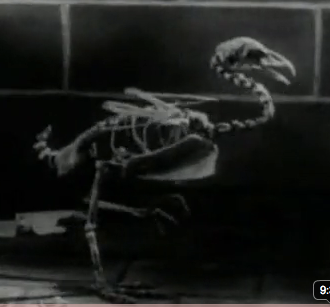
He's developed a style and animation language all his own, just at the dawn of animation history. His rendition of Satan is borderline iconic.

The execution, attention to detail, expressive movements and depth of thought put into the Satan character is indicative of Starewicz's mastery of animation as an art form.
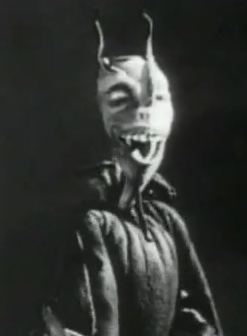
Aesthetically, all the characters have a immediately recognizable style- it was relevant then, and the Starewicz's mastery of style allow it to remain relevant today.
Elements of his work maintain a sense of modernity, and cartoonists and animators today seem to have adopted many of the stronger aspects of his animation. The tradition of his character design and the choreography of their movements seems to have been carried on through Tim Burton, the modern animator of the Disney classic 'The Nightmare Before Christmas', 'Coraline' and the 'Corpse Bride'. His attention to the detailing of each character and the aesthetic of their design is a little Seussical, and the party montage is obviously the inspiration for a number of productions Disney and Warner Brothers have done. Starewicz's 'Devil's Ball' is a throughly enjoyable and masterful piece of animation, and it is Starewicz's technical prowess, attention to detail and comic sensibility that really make it ...
really great!
"L'Idee" (1931): A Fantastic Short in both Theme and Technique
L'Idée (1932)
Uploaded by Tomsutpen. - Check out other Film & TV videos.
Artist Berthold Bartosch, born in Bohemia, created his most well-know animated short film "L'idee" ("The Idea") in 1931, after moving to Paris in 1930. He based his animation on woodcuts by Flemish artist Frans Masereel. The opening words are taken from Masereel's prologue to his book, which included the woodcuts. The basic idea of the story revolves around a nude female figure who represents "truth." Notice the stunning visuals, using cut-out figures, cardboard backgrounds, and very deliberate lighting. Especially have a close look at 5:14 where ghosts move across the screen. Can you guess how he created the illusion of all the smoke and fog? Have a close look. I'll give you a hint: it involved a glass plane... it's bubbles! Bartosch used several glass planes illuminated from behind, on which to move foam around--so simple and so effective.
Oskar Fischinger
In 1921, Fischinger was introduced to Walter Ruttman, who made abstract films. He was inspired to experiment with coloured liquids, wax and clay. He developed a "Wax Slicing Machine", which was programmed to slice wax in time with a camera shutter.
In 1924, He was hired by Louis Seel, to make more mature cartoons. He used this time to also test new methods of film making, including using multiple projectors.
In 1933, The Nazi's called the kind of art Fischinger was making "Degenerate Art". However, Fischinger claimed his work to be commercials. An agent from Metro-Goldwyn-Mayer saw one of these commercials and was impressed. Soon after, Fischinger was hired by Paramount Pictures.
Early Abstractions
|_Kelly_|
Lust For Life

The title of this posting is also the title of a great song from 1977 by Iggy Pop, but I felt it was an appropriate juxtaposition to the 1934 animation by Anthony Gross and Hector Hoppin by the title of La Joie de Vivre (The Joy of Life/ Zest for Life)--mainly due to the titles' similarities but also because of the embrace of youth. Anyhow, totally different time periods, completely different motivations, although both have to do with the blissful delusions found in the fantasies of the young. La Joie de Vivre is a fantastical exploration of whimsy, a dream-like, art deco, surrealist vision of the worlds of both nature and industry. Both nature and industry are separated but equally navigated by the two young women who explore the world. Within this capsule we see houses that recall early suburbs, web-like power lines, and visual abstractions of modernist architecture. As these two women run jovially through a spinning and intoxicating nature and a sterile, industrialized, urban environment near collisions are always avoided. In the end, the two women are whisked away by a man on a bicycle flying as everyone does at the end of a long hard day--through the clouds.
|| Post by: Stephanie Clark ||
You like it? I stole it!
Nobody Beats the Drum - Grindin'
Feb 7, 2011
Ladislaw Starewicz, and the Revolution of Stop Action
 Scene from 'The Cameraman's Revenge'. (Found at Listal.com)
Scene from 'The Cameraman's Revenge'. (Found at Listal.com) Ladislaw Starewicz was a very creative, and very clever man of his day. He was one of the first animators to produce stop action films with plot. While working at the Museum of Natural History in Kovno, Russia, Starewicz made several documentary films. His first four films were live action and often revolved around arthropods and their natural behavior. But his interest in stop action officially began after his fifth film in 1910, which was originally intended to be a documentary film of two stag beetles fighting. However, being that stag beetles are nocturnal, the two stags would start falling asleep as soon as the staging lights were turned on. After a few failed attempts to film the documentary, Starewicz decided to make the film a stop action animation (out of inspiration by Emile Cohl’s ‘Les allumettes animees’, filmed in 1908). And so Starewicz took dead stag beetles and replaced their legs with wires that were then wax sealed on to their thorax. This film, ‘Lucanus Cervus’ was to become the first stop action film with plot. Having more control over what the characters would be doing in the film, Starewicz would then make a series of other films using this technique. Just as quickly as the method was invented, the characters in these films became more anthropomorphic. For example, in 1911, ‘The Grasshopper and the Ant’ which was about a Grasshopper who sang and played all through the summer, and an Ant who would gather food and build a house to prepare himself for the winter. In the end, the Ant was able to survive through the winter, while the Grasshopper shivered and starved. And then in 1912, there was ‘The Cameraman’s Revenge’, which was about a married couple of Stag Beetles, whose calm life would soon turn chaotic after Mr. Beetle begins to cheat on Mrs. Beetle, and the affair is documented and exposed by an aggressive cameraman. When the films were reviewed by the Museum, many of the reviewers, including one British reviewer, were so convinced by the animation that they believed that the insects were alive and trained to do the things that they did. Later on, Ladislaw Starewicz would create more stop action animated films, but began to shift from dead insects to flexible humanoid puppets. For example ‘The Frogs who wanted a King’, filmed in 1922, ‘The Voice of the Nightingale’ filmed in 1923, and ‘The Devil’s Ball’ filmed in 1934.
- Jon Horn
Wikipedia.com
http://artvoice.com
PInscreen Animation

Pinscreen animation is a technique that involves a white screen containing many pins that occupy small holes. A light is used on the side of the screen enabling different pin lengths to cast a shodow. The further the pins are pushed out the darker the screen becomes. This technique creates a sense of depth and texture difficult to render with traditional forms of animation. It is not a very popular technique because of how laborious and time consuming the process is.
Alexandre Alexïeff and his wife Claire Parker developed the pinscreen method in the 1930s. Over a time span of 50 years they created 6 films which include: Une Nuit sur le mont chauve (1933; A Night on Bald Mountain). La Belle au bois dormant (1934; Sleeping Beauty), Parade de chapeaux (1935; “Parade of Hats”), En passant (1943; Passing By), Le Nez (1963; The Nose) and Le Procès (1962; The Trial). Upon viewing the films Alexieff and Parker created one can see the time and effort alloted to each carefully crafted image. All of the films are truly works of art.
A few documentaries have been created detailing Alexieff and Parkers pinscreen animation methods : Alexeieff at the Pinboard (1960), Portrait of Alexeieff (1971) , Pin Screen (1972)
In today's digital society many computer programs have been created to simulate the images a traditional pinscreen is capable of creating.
Image from: http://cinecouch.com/top250_2.html
Info from: http://www.writer2001.com/lopes.htm
--Callie
Feb 3, 2011
Lotte Reiniger

Lotte Reiniger was born in 1899, and since childhood always seemed to be able to cut paper into fantastic silhouettes. She originally intended to be an actress, but instead captured the interest of Paul Wegener,due to her silhouette making ability. He commissioned her to fashion silhouettes to accompany the intertitles for a couple of his films.
Her connection with Wegener proved to be beneficial because he introduced her to a group of men who were in the process of creating an animation studio. It was here that she created her first film, "The Ornament of the Loving Heart." She married one of the men in the group, Carl Koch, and he made an animation studio for her and was her producer and cameraman. Reiniger went on to make many wonderful films including "The Adventures of Prince Achmed" which is commonly thought of as the first full length animated film.
When the Nazis took Germany over, Reiniger and her husband fled to England where they continued to make films together. During wartime, however she only made one film because she had to go to Berlin to attend to her ill mother. Though many of the original film negatives from her work were destroyed in the war, many still survive.
When Koch died, Reiniger stopped working for ten years until she returned to Germany and resumed her work. She went on to recieve the Filmband in Gold, and the Order of Merit. She created two more films before she died in 1981.
Post by Luke
Info from: http://www.screenonline.org.uk/people/id/528134/
Image from: http://www.ferdyonfilms.com/wp-content/uploads/2010/05/prince-achmed-11duo.gif
